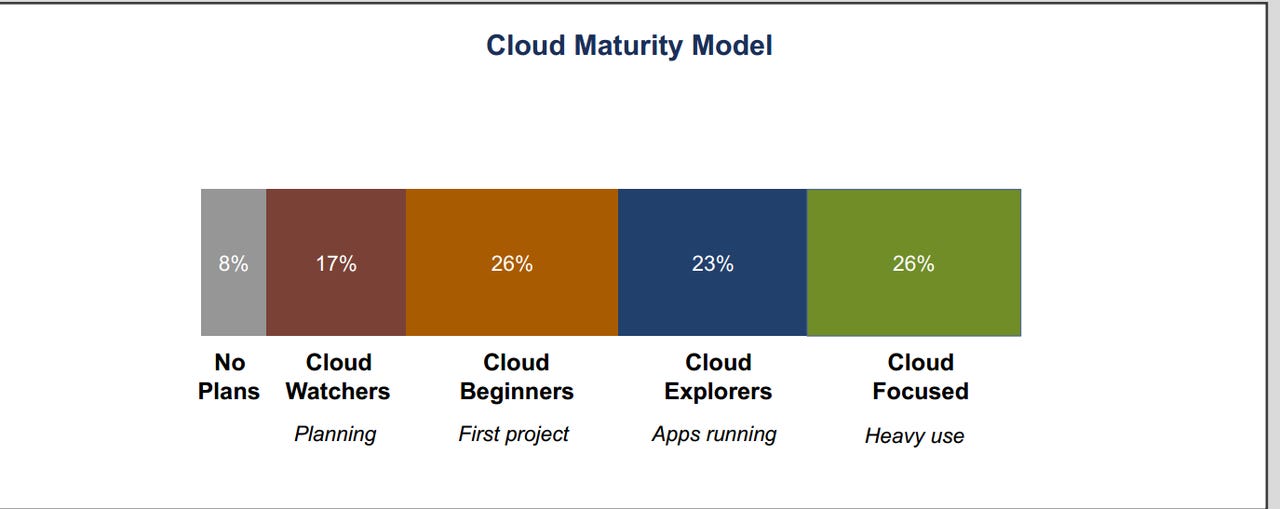It's a cloud, cloud, cloud, cloud world

If you still think the cloud is just so much marketing hot air, RightScale, a cloud management company, has news for you: Almost 50 percent of businesses have already moved at least some applications to the cloud.

In its survey of 625 IT professionals, RightScale found in its RightScale State of the Cloud 2013 report (PDF Link) that 26-percent of businesses were already using clouds, Cloud Focused; 23-percent were not that far along but had none-the-less had multiple projects and apps on the cloud, Cloud Explorers; 26-percent were on their first cloud project, Cloud Beginners; 17-percent were considering using the cloud, Cloud Watchers; and a mere 8-percent had no cloud plans. If you still think the cloud is vaporware, you need to stop being an ostrich and get your head out of the sand.
This isn't just an enterprise move. RightScale said that three out of four companies are moving to the cloud. While the enterprise, at 77-percent, is adopting the cloud faster than SMBs. 73-percent, businesses of all kinds and sizes are embracing cloud computing.
As the cloud movement grows, RightScale has also found that while SMBs may be willing to put all their IT eggs in one cloud basket, the enterprise is much more inclined to move to a hybrid mix of public and private clouds. Specifically, larger businesses start with using the public cloud and then build out a private cloud and in the end, 29-percent are currently using a hybrid cloud model. Some, 15-percent, even if they are committed to public clouds such as Amazon Web Services (AWS), are hedging their bets by using multiple public cloud services.
Which clouds are they using? If it's a public cloud, AWS is still the cloud of choice, but it's no longer the automatic choice. Rackspace (RAX), which is built on top of OpenStack; Google Compute Engine (GCE); and Windows Azure total more than 20-percent of the market. Taken together, they're about 20-percent behind AWS. Therefore, RightScale predicts that "In such a competitive environment, buyers can expect vendors to compete for their business on price, features, and service."
They're right. AWS recently slashed prices for dedicated virtual servers by 80-percent. RackSpace responded by talking up its value and support. The real worry for AWS's competitors is that Amazon can afford to lose money on AWS and cut prices still lower. If all cloud customers care about are prices, AWS does look unbeatable. If they also care about features and services--and they can deliver better than AWS does--then the other cloud vendors still have a shot.
On the private cloud, it's a different story. Here AWS doesn't have a prayer. In three years OpenStack has come out of nowhere and is now leading private cloud rate. It's followed by CloudStack and Eucalyptus, which can work with AWS.
While RightScale didn't point this out, another noteworthy fact about the growth of the cloud is that with the exception of Azure, its all open-source plays. RackSpace, CloudStack and Eucalyptus are all pure open-source. AWS and Google Compute Engine aren't pure open-source, as AWS is based on Linux and the Xen hypervisor and Google Compute Engine runs on Linux.
Put it all together and what do you get? The conclusion is that traditional IT needs to wake up and smell the coffee. Cloud computing is the future of IT, it's really that simple.
Related Stories: